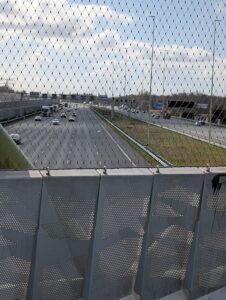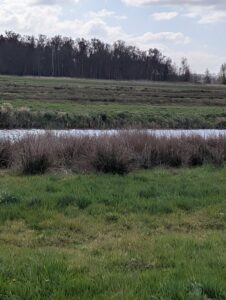
In the Netherlands, the cities are densely populated. So are what we call suburbs. But cross a bike bridge over the 8-lane freeway next door to Maarssen, and you’re in another world, with farms and nature preserved, a single bike path running toward the small village, and a few walking paths between the fields. It’s a 10-minute bike ride from the city, over a bridge offering a view of huge metal sound baffles that are much better at their job than anything I’ve seen in the U.S.
The baffles and the freeway create a clear separation between where people live and where wild animals live. In Georgia, cities are really suburbs, and they run north to the state line. Wild animals must adapt, and they have. Rabbits, coyotes, and even deer have replaced the raccoons and opossums that lived around me 40 years ago. They’re the 
Species diversity has taken a huge hit. The coyotes are breeding with wild dogs, making them more like dogs with every generation. Those rabbits are the same ones you see in Denver. Those deer would be at home in Texas. Large lots make rats as common in Atlanta as in New York, and gray squirrels are everywhere.
We have bird song, still, but much less than in the last century. We have hawks, vultures and even owls, sometimes swooping down to feast on the squirrels.
But the number of species is very limited, and all are very familiar.
The Lesson

You don’t know what you’ve lost until you’ve lost it, and sometimes not even then. America has lost its wildlife, because we’ve chosen to build suburban cities stretching to the horizon over dense cities surrounded by farms and nature. The Netherlands is protecting its, despite high population density, as the world’s second biggest food exporter.
Our land use shapes our environment. It determines which species thrive and which disappear. The Netherlands environment is far more diverse than the Georgia environment I came from, despite our larger side and smaller population.
This may be the most important lesson I’ve learned here so far.










